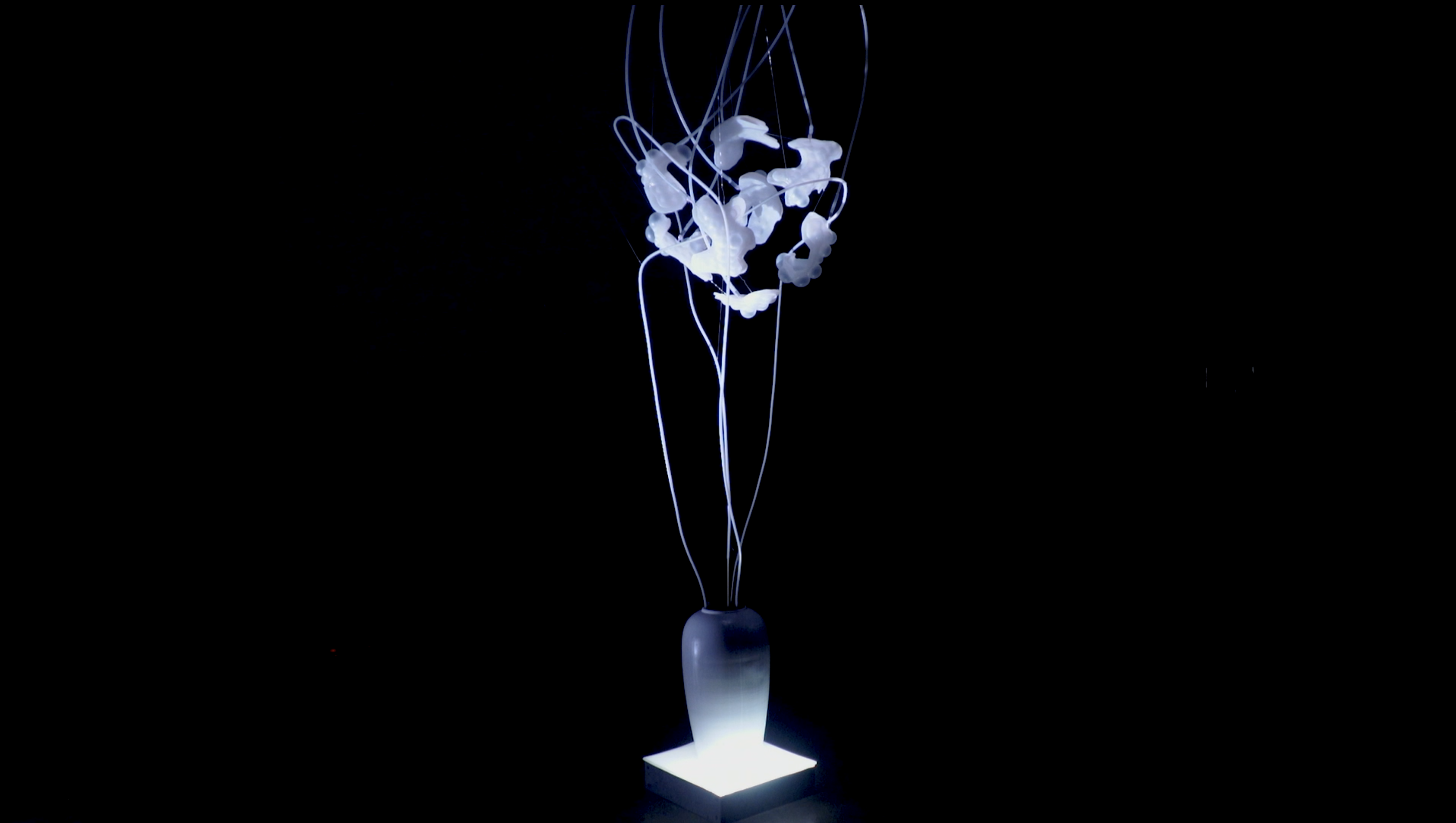
Kinematic sculpture. Silicone, compressed air, PVC tubing, water pump, vase. 2018.
Our investigation begins with the mechanization of the woman body in the contemporary context: the woman body as artificial intelligence, as a sexual machine, as assistant robots, essentially as a mean of production. Looking at technological and cultural examples, the future of personal assistant seems to be female. Amazon’s Alexa, Hanson Robotics’ Sophia, Project Aiko, Ex Machina’s Ava, Apple’s Siri, are all famous AI/robots that have been created and identified as female. Progress doesn’t seem to step away from binary culture, heteronormativity and gender stereotypes. In each of these cases, the female bot is a servant or an assistant to the human being. The companies who develop and developed these products have in mind to create the most woman like robots and tries to close the gap between the real and the artificial. How will these advances structure the idea of women in our society?
The idea of the woman body as a machine goes back at least as far as the first century before Christ. One of the first occurrences is told through the story of Roman Charity. In this tale, Pero, the daughter of Cimon who has been condemned to die from starvation, dedicates herself to visit and clandestinely breastfeed the man every day. This story is told as an example of filial piety, but could also be perceived as a way to enchain women to patriarchy and to the commodification of their body. Pero sans Cimon explores, therefore, the idea of the woman body used as a milk production machine.
Pero Sans Cimon is an autonomous machine made out of soft materials: silicone, fabric, and wires. Silicone is used to create a sculptural mass full of air cavities that inflates and deflates by the agency of an air system then producing unconventional forms. A tubing system is going in and out of the sculpture in which milk will circulate and leak into a carafe. The carafe never fills, therefore, the machine must keep producing. This piece aims to bring forward the forces at stake within our current capitalistic context.
Collaboration with Emma Forgues.




c::